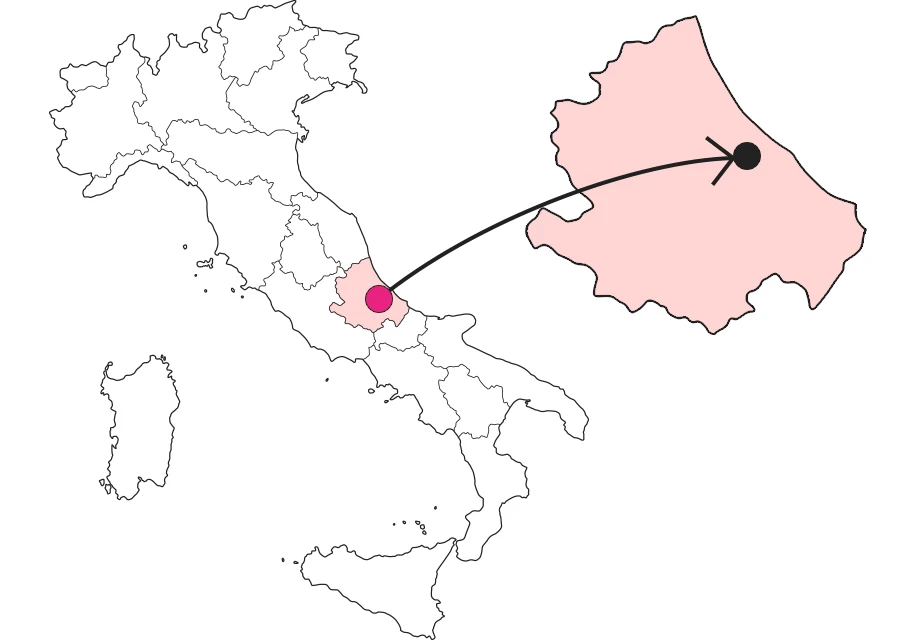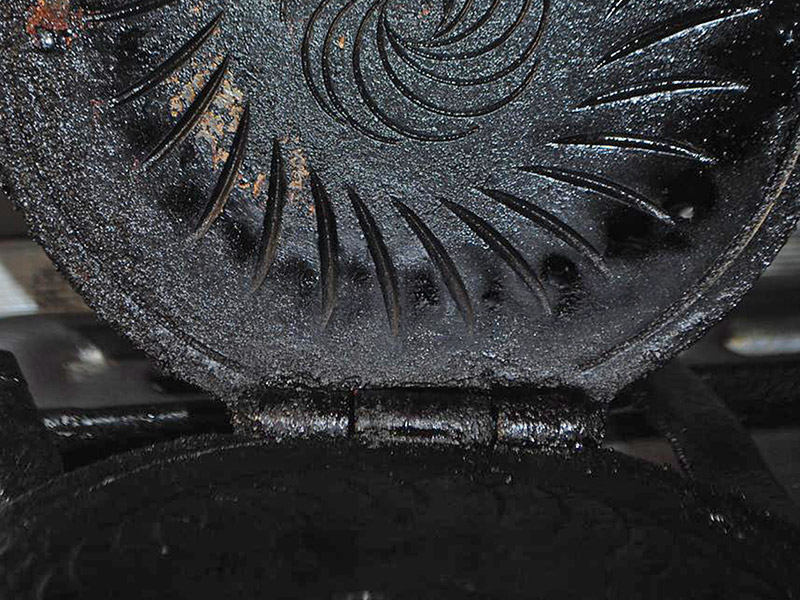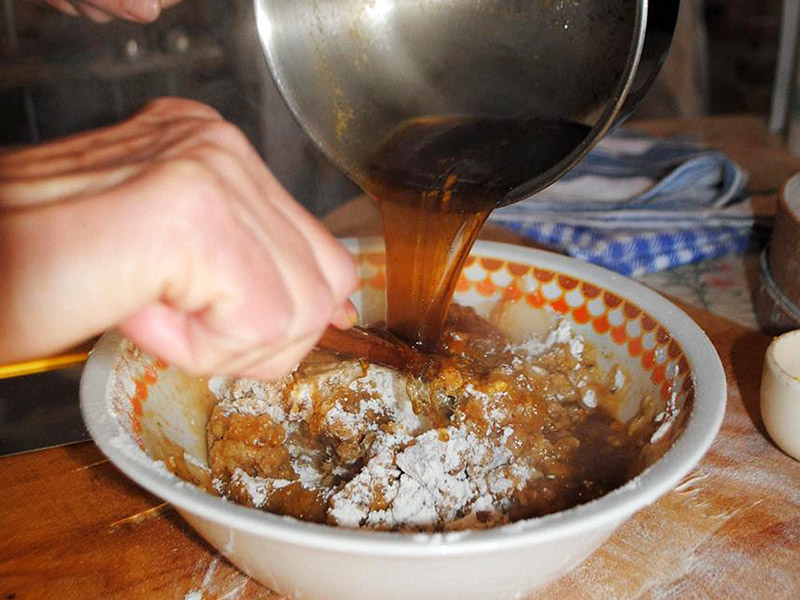








Where

Don't call it neola, the classic Abruzzo pizzella or ferratella made with eggs, flour and sugar. The Nèvola, with its open "e" and central "v, " is Ortona's traditional sweet, a crumbly, cone-shaped wafer with an intense, almost exotic flavor.
 The characteristic iron for baking and "printing" the nevole
The characteristic iron for baking and "printing" the nevoleThe preparation
Let's start with the tools of the trade: a heavy press iron consisting of two round plates joined by a hinge that, placed over the fire, imprint a decoration on the wafers. Preparation requires placing balls of dough 2-3 cm in diameter in the center of the red-hot iron until cooked on both sides. Tradition holds that the cooking times on the fire are the same for reciting a "Ave Maria" on one side and a "Pater Nostro" on the other. When cooked, the iron should be quickly pressed open. A puffy wafer will come out, which must be split to make two thinner ones that are then rolled to form the typical conical shape. The dough for this particular cake is made from cooked must, flour, extra virgin olive oil, orange zest and juice, ground cinnamon (and sometimes anise).
 The cooked must is combined with the dough.
The cooked must is combined with the dough.From the very first taste you will be won over by the fragrance of the cooked must, expertly prepared at home by boiling the prized pergolone grapes in copper cauldrons, and by the thin, crumbly wafer with its orange and cinnamon undertone. The preparation of the recipe requires a considerable amount of dexterity and patience, and the boiling wafer is expertly worked by the quick, steely hands of women of yesteryear.
 Baking
BakingHands in the oven, why not?
If you are feeling particularly brave and are lucky enough to find the cooked must and the appropriate iron, perhaps in the local market of Ortona or in the beautiful and not-too-distant town of Guardiagrele, know that the rooms awash in the heavenly scent given off by this particular dough will repay all the failed attempts and the inevitable scorched fingers. Alternatively, you could try to get into the good graces of the generous local ladies, who are happy to reveal their ancient secrets to an "outsider" throughout the various stages of preparation. You will come away enriched with ancient knowledge and abundant tasting and take-out portions. I advise you, however, not to touch the subject of fillings. In some cases freedom of opinion does not apply: nevola should be eaten empty.
 It takes a lot of patience, several failed attempts and a few burnt fingers, but for nevole, that and more!
It takes a lot of patience, several failed attempts and a few burnt fingers, but for nevole, that and more!A story between the sacred and the profane
According to tradition, the history of nevole can be attributed to a group of nuns who devised them using the "iron" of hosts in the 13th-14th centuries. However, the earliest written sources date back to the 16th century, and in the late 1500s the Bishop of Lanciano banned their preparation as a reminder of the phallic form. Very widespread in ancient times was the custom of noble families to have custom irons made that imprinted the coat of arms of the lineage on the Nevole. Apparently, even Margaret of Austria, who lived her last years of life in Ortona, had one customized with her own initials. Today the nevole recipe is protected by the Slow Food Foundation in its "Ark of Taste."


